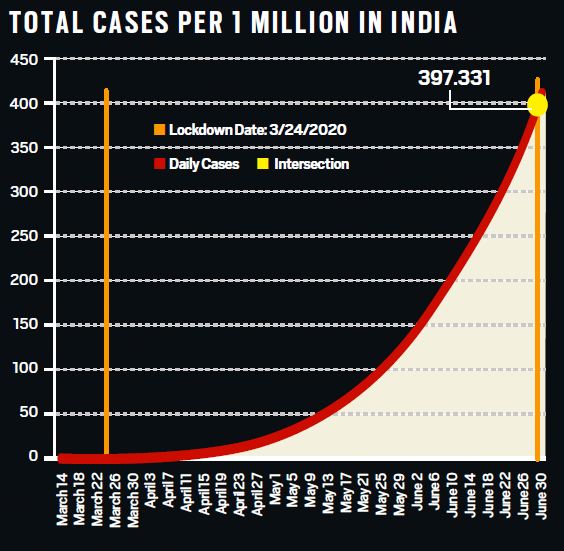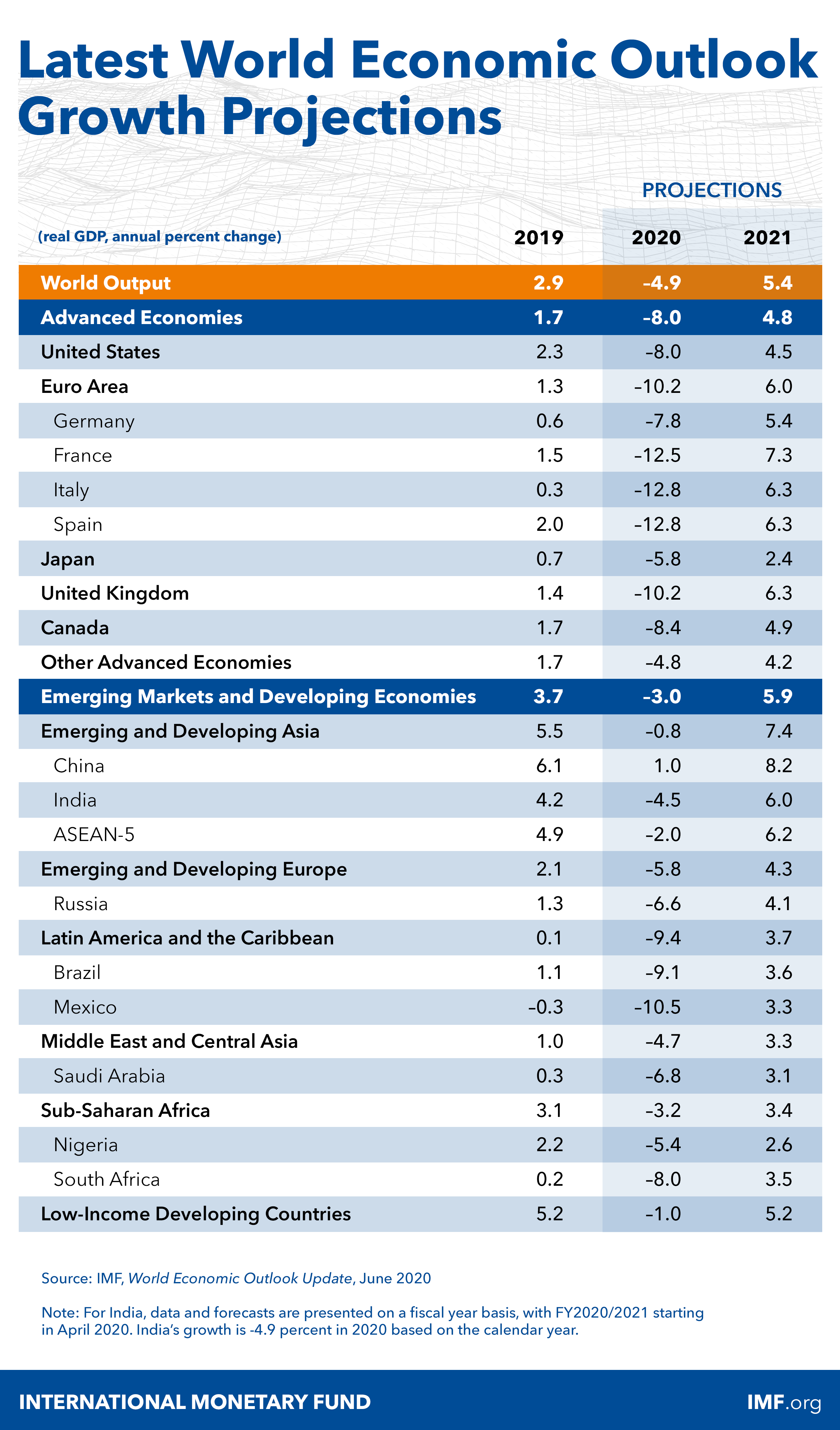
Among countries fighting to stave off COVID-19, India became known as the world’s largest and the most stringently imposed lockdown, with the Modi government giving barely four hours’ notice to residents and citizens before the shutters went up on March 24. The lockdown, after multiple extensions, lasted for several weeks. Yet, today, India is ranked as the third most affected country in the world (as depicted by Johns Hopkins University) in terms of total confirmed cases (although, when adjusted for population size, it has a better ranking). In terms of number of deaths too, it does not fare well relative to many of its peers.
What happened? How did the great Indian lockdown fail to produce the expected outcomes? It appears that, instead of ‘flattening’ the pandemic curve, the lockdown strategy merely delayed it for a while.
Table 1 Confirmed Cases by Country/Region/Sovereignty – the top ten
3,711,359 US
2,074,860 Brazil
1,038,716 India
764,215 Russia
350,879 South Africa
349,500 Peru
338,913 Mexico
328,846 Chile
295,632 United Kingdom
271,606 Iran
This is what Kaushik Basu , noted Indian economist (former Chief Economic Adviser to the Indian government and former Chief Economist of the World Bank) says:
The lockdown, announced on March 24, far from controlling the spread of the pandemic, seems to have made it worse. Two weeks after the start of the lockdown, the infection rate picked up and it has been on an alarming upward climb since then (See Figure below)

There is apparently more bad news on the pandemic front. Media reports in India highlight the following disturbing prospects:
A study by researchers from the Massachusetts Institute of Technology (MIT) that stated that the number of Covid-19 cases recorded per day in India may surge to 287,000 by early 2021 if a vaccine or treatment isn’t developed soon. In fact, India may record the highest number of fresh cases in the world by the end of winter in 2021, according to this study.
Basu notes that:
There was a natural expectation that the government had plans of how to handle the sudden stoppage of work and movement of people, and the break in supply chains. But there was no evidence of any of these ancillary actions. I do not have enough information to know what plans there were, but the total absence of any supporting action, to ramp up testing, expand the medical sector and to help the millions of stranded poor workers, was baffling. It was almost as though some people in government — bureaucrats and even some politicians who are part of this government — had decided to sabotage the Prime Minister’s lockdown by sitting back and doing nothing.
Perhaps the worst aspect of the lockdown was the immense suffering caused to hundreds of thousands of poor migrant workers. Deprived of livelihoods that are typically based on daily wages, these poor and vulnerable migrant fled – or at least tried to do so – the cities to seek sanctuary in their villages. Huddled together as they travelled to their destinations, these migrant workers paradoxically became a potent source of new rounds of infection.
What has happened, Basu concludes, is a ‘policy disaster’. The economy is spiralling down while the pandemic is spiralling up. IMF forecasts suggest that the Indian economy will contract by -4.5% before recovering in 2021. This is the worst such contraction since 1980. Estimates of monthly unemployment rates suggest that it shot up to a staggering 23.5% in May before coming down to 11.0% in June 2020 – a historical high. The incidence of extreme poverty is likely to go up by 100 million, reversing sustained reductions in poverty over past decades.
India’s experience is a cautionary tale on how simply implementing a lockdown – however ambitious and stringent – is not enough to cope with a pandemic. Crucial supporting actions are required that can balance the risks of lost lives with that of lost livelihoods.

